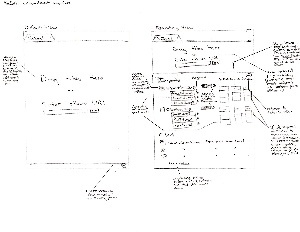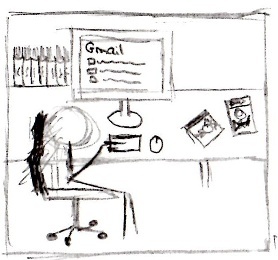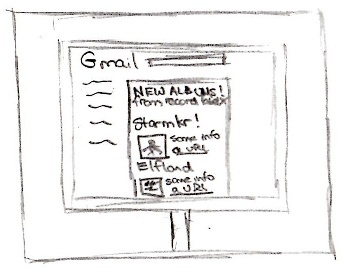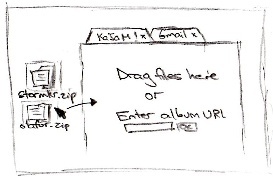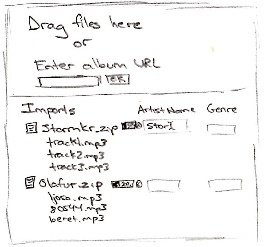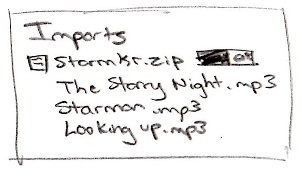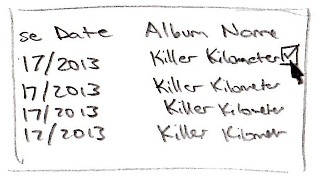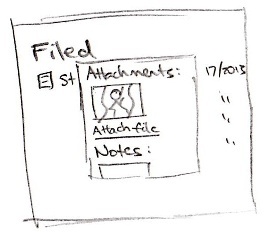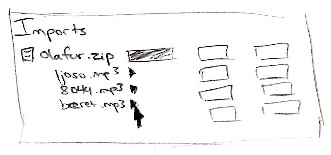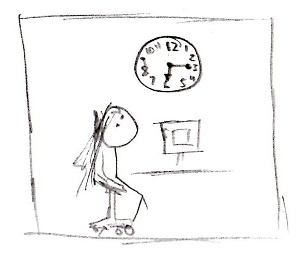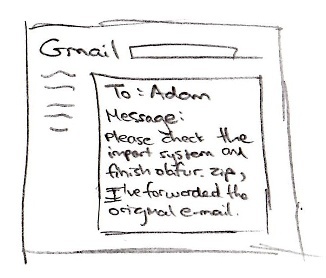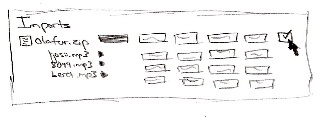Overview of Design
This is a design that focuses on providing users with a clean and efficient interface for importing digital music.
- Motivation: This design focuses on the most critical task of the three identified in GR1 (importing music). We attempt to make importing music as fast and easy as possible for music directors.
- Design Idea: This design uses Dropbox as an inspiration, and focuses on efficiently importing music to the playback library.
- Scope: The essence of the project is that digital incoming music is mostly being thrown away (deleted); while the other tasks are also helpful, without an efficient and simple way to get digital music into the playback library, the other tasks become irrelevant since they require music to first be in the system at all.
- Pro: By scoping and focusing on the most important of the three, our design covers less breadth in features but focuses on making the critical task usable and effective.
- Con: The downside here is that we get less experimentation with the other tasks in this design, but we feel it's a reasonable trade-off given the relative importance of tasks.
An overview of the entire interface is shown here, with the scenario play-through in storyboard format below.
Storyboard
Sketch |
Explanation |
|---|---|
|
Lana energetically arrives at the music studio. After chatting with a fellow music director about some new music for a few minutes, she sits down to check her e-mail. |
|
She's surprised to see an e-mail from the record label TerrorMonkey, she hasn't heard from them in months. Two of the albums strike her interest, so she uses the direct download links provided to download them to her desktop. |
|
She opens up the KaJaM! interface in her browser, and drags the downloaded files onto the interface. |
|
The imported zip files immediately start uploading to the playback library. A pane has risen from the bottom of the interface, showing the import progress of the albums. Lana starts filling in the artist name for one of the zipped albums. |
|
Filling the artist name for the zip file automatically populates the same field for each of the album tracks. |
|
Afterwards, she replaces the generically named "Track1.mp3", "Track2.mp3", "Track3.mp3" with the real track names from a web search for the album. |
|
The upload has completed and Lana has filled out all required fields. A confirmation button is now available to add the album to the library. She clicks it. |
|
She realizes she forgot to attach the album artwork, so she scrolls down to the "Recently Filed" section of the interface, and clicks on the attachment icon. |
|
The dialog box pops up, and Lana sees that the system has already attached the cover-art automatically. The album artwork must've been included in the zip file. |
|
The second album is also done uploading. She plays one of the tracks to get a feel for the new music. She loves it. |
|
She looks up at the clock and realizes she is short on time. Lana has to make a radio show in thirty minutes. |
|
She forwards the record label e-mail to Adam, her assistant ("elf"). She tells him to check KaJaM!, so that he can finish entering the details and add the album to the playback library. Lana leaves in a hurry to prepare for her show. |
|
Later that evening, Adam receives Lana's e-mail at his home computer. Even though he's tired from his Computer Science classes that day, he doesn't mind listening to new music while filling in some album details. He finishes by approving the album into the playback library, to be played at a later date on WMBR 88.1. |
Analysis
Learnability
- The simple layout and instructions for the drag/drop mechanism give good information scent for starting the import process (also, this is similar to how e-mail attachments work)
- The empty text boxes are fields the user is required to fill in for the album to get added to the playback library, this will be learnable with the addition of a cue to enter information (red boxes, a red note at the top requesting information for the albums)
- It will not be immediately obvious to the user that entering information for the top-level file (e.g. zip file, the entire album) will propagate text down to all the tracks automatically; this can partly be circumvented by forcing the user to enter these top-level boxes before giving them the option of editing track information (except for track names, which should always be immediately editable)
- Because this design was focused on efficiency, there is no focus on guiding a first-time user, for example a user must know that they have to click a confirmation button (which only appears after required information has been filled in) after filling in an album's information before the album actually enters the playback library (the "Filed" section at the bottom of the design)
Efficiency
- The asynchronous import allows the user to enter album (and even track level information, we can find out the files contained in a zip without having the entire zip file at once) information while uploading to the system
- The automatic propagation of album-level details to the tracks contained in them allows fast entry of data; additionally, all fields are textboxes so editing requires no additional clicks other than the keyboard focus click
- The system automatically picks up any non-music files from the zip file, such as cover art or liner notes and attaches them to the album
- System state is always preserved, so a music director short on time can always hand the work over to assistants or leave it for a later time
- One possible inefficiency is if multiple albums from a single album need to be added to the system, each album link needs to be manually copied (or dragged over) to KaJaM!, it would be even better if we could extract multiple URLs from an e-mail automatically (though getting the raw HTML of an e-mail requires some kind of a save or allowing our system access to the user's e-mail inbox)
Safety
- A user may drag something that does not contain any music at all (a zip file without music files, or a file with an unrecognized extension) in which case we can safely ignore those files
- A user may drag the wrong album(s) or track(s), but these can be easily canceled during import (there is a cancellation button next to the progress bar of each importing album)
- If the user is editing track names for an especially long album, such that they are unable to see the album name on the screen while editing the track names, they may begin entering track names for a different album
- Because all fields are textboxes, this makes accidental keyboard focus (and ensuing typos) likely; one way to deal with this is to run some NLP detection for unpronounceable words and/or try to look-up album track names automatically (one should be careful not to make such a detection algorithm too rigid since creative song names would hamper efficiency)
